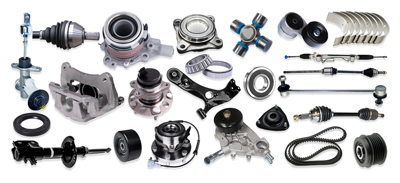In modern automotive technology, the flywheel, as a crucial component of the engine system, is often overlooked. However, this small part plays a vital role in the vehicle’s power output, smoothness, and efficiency. From the engine to the wheels, let’s take a deeper look at how the flywheel works in each aspect of the vehicle’s performance.
What is a Flywheel?
A flywheel is a rotating component mounted on the engine crankshaft, primarily designed to store and release kinetic energy, maintaining engine smoothness. It is typically made of cast iron or steel and must be both strong and sufficiently heavy to effectively absorb the vibrations and fluctuations of the engine’s operation.
How Does a Flywheel Work?
The flywheel connects to the engine crankshaft and uses its inertia to smooth out the unbalanced fluctuations in engine speed. When the engine pistons generate power during the compression and power strokes, the flywheel, through its rotation, converts these unstable pulses into more consistent power, providing continuous, stable power output.
In addition, the flywheel plays an essential role in the clutch system. In manual transmission vehicles, the flywheel helps to smoothly engage or disengage the power flow between the engine and the transmission, making gear shifts more seamless.
How the Flywheel Affects Vehicle Performance
- Power Smoothness:
The flywheel smooths out the vibrations generated during the engine’s operation, making the power output of the vehicle more stable. Every engine cycle generates some level of vibration and shock, but the inertia of the flywheel absorbs and smooths these out, preventing the vehicle from experiencing “shaking” and thus improving driving comfort.
- Acceleration Response:
The weight and speed of the flywheel directly affect the engine’s acceleration performance. A heavier flywheel stores more kinetic energy, helping to maintain stable engine speed, thus providing continuous power during acceleration. However, if the flywheel is too heavy, it may cause slower acceleration. On the other hand, a lighter flywheel can improve engine responsiveness, making the vehicle more rapid in starting and accelerating.
- Fuel Efficiency:
The flywheel can improve fuel efficiency to some extent. When the flywheel works in harmony with the engine, it helps balance engine load, reducing fluctuations, and optimizing combustion efficiency. This has a positive impact on improving fuel economy, especially in city driving with frequent stops and starts, where the flywheel can reduce engine load and lower fuel consumption.
- Smooth Gear Shifting:
In manual transmission vehicles, the flywheel is an integral part of the clutch system. By maintaining engine rotational inertia, the flywheel ensures smoother engagement between engine speed and transmission, leading to a more seamless gear shift experience.
- Extended Engine Life:
The flywheel effectively reduces shocks and impacts during engine operation, minimizing wear on engine components, especially at high speeds. By balancing engine speed fluctuations, the flywheel alleviates strain on various engine parts, thereby extending the engine’s lifespan.
Types of Flywheels and Selection
Depending on different needs and driving experiences, flywheels can be classified into two main types: standard flywheels and lightweight flywheels.
-
Standard Flywheel: This flywheel is suitable for most everyday vehicles, offering a good balance between stability and durability. Standard flywheels are typically heavier and provide more inertia, making them ideal for vehicles that require long-term, stable operation.
-
Lightweight Flywheel: A lightweight flywheel is lighter in weight and can improve engine responsiveness, making it suitable for performance vehicles or driving needs that require quick acceleration. While a lightweight flywheel enhances power response, it may also lead to more engine speed fluctuations, so it must be carefully matched with other components.
Flywheel Maintenance and Replacement
Although simple in design, the flywheel can experience wear over time, especially in high-performance vehicles or those driven frequently. Common flywheel issues include surface wear, cracks, or poor clutch engagement. When these issues occur, they not only affect the smoothness of the vehicle’s operation but also reduce engine and transmission performance.
If a flywheel is damaged, it is necessary to replace it promptly. When replacing a flywheel, it is important to choose the right type that matches the engine and transmission to ensure optimal vehicle performance.
Conclusion
The flywheel is a key component in the engine system of any vehicle and plays a significant role in ensuring smooth power delivery and fuel efficiency. From the engine to the wheels, the flywheel stabilizes engine speed, optimizes acceleration, improves fuel economy, and ensures smooth gear shifts, thus enhancing the overall vehicle performance and driving experience.
Whether for a daily commuter vehicle or a high-performance sports car, the flywheel works quietly behind the scenes to make a significant impact. Choosing the right flywheel type and maintaining it properly will bring better performance and a longer lifespan to your vehicle.

 Twitter
Twitter
 Facebook
Facebook
 Linkedin
Linkedin
 Google +
Google +



